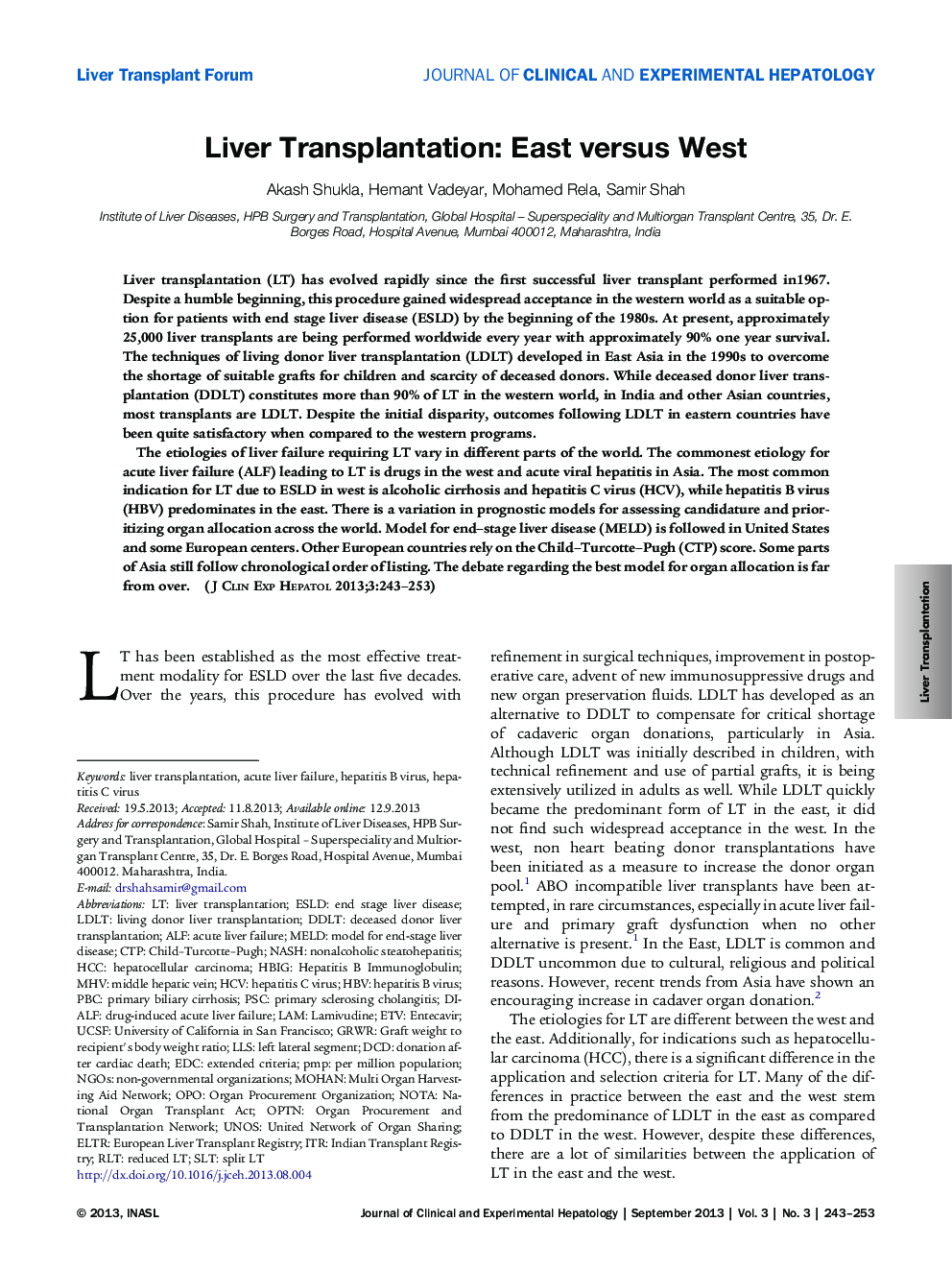| Article ID | Journal | Published Year | Pages | File Type |
|---|---|---|---|---|
| 3339134 | Journal of Clinical and Experimental Hepatology | 2013 | 11 Pages |
Liver transplantation (LT) has evolved rapidly since the first successful liver transplant performed in1967. Despite a humble beginning, this procedure gained widespread acceptance in the western world as a suitable option for patients with end stage liver disease (ESLD) by the beginning of the 1980s. At present, approximately 25,000 liver transplants are being performed worldwide every year with approximately 90% one year survival. The techniques of living donor liver transplantation (LDLT) developed in East Asia in the 1990s to overcome the shortage of suitable grafts for children and scarcity of deceased donors. While deceased donor liver transplantation (DDLT) constitutes more than 90% of LT in the western world, in India and other Asian countries, most transplants are LDLT. Despite the initial disparity, outcomes following LDLT in eastern countries have been quite satisfactory when compared to the western programs.The etiologies of liver failure requiring LT vary in different parts of the world. The commonest etiology for acute liver failure (ALF) leading to LT is drugs in the west and acute viral hepatitis in Asia. The most common indication for LT due to ESLD in west is alcoholic cirrhosis and hepatitis C virus (HCV), while hepatitis B virus (HBV) predominates in the east. There is a variation in prognostic models for assessing candidature and prioritizing organ allocation across the world. Model for end–stage liver disease (MELD) is followed in United States and some European centers. Other European countries rely on the Child–Turcotte–Pugh (CTP) score. Some parts of Asia still follow chronological order of listing. The debate regarding the best model for organ allocation is far from over.
